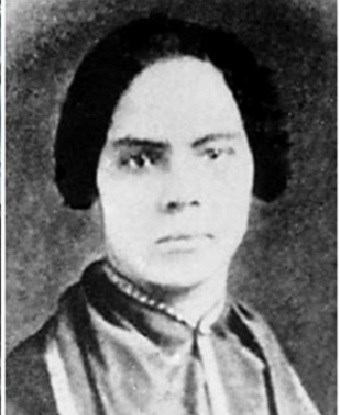Part of a series of articles titled Curiosity Kit: Mary Ann Shadd Cary.
Article
Learning from Mary Ann Shadd Cary

This Curiosity Kit Educational Resource was created by Katie McCarthy a NCPE intern with the Cultural Resources Office of Interpretation and Education.
Background:
During Mary Ann Shadd’s childhood, her family actively helped freedom seekers escape slavery. After the passage of the Fugitive Slave Act in 1850, Mary Ann and her family moved to Ontario, Canada. While there, Mary Ann married Thomas J Cary, opened a school for black and white students, and became the first black, female newspaper editor in North America. Cary travelled from her home in Toronto throughout the United States during the late 1850s as an anti-slavery speaker. She returned to the US after her husband died in 1860, and continued her political activism after the Civil War. In addition to calling for equal treatment for African Americans, Cary was a member of several women’s suffrage organizations. To learn more about her life, visit Places of Mary Ann Shadd Cary.
Objectives:
-
Understand how Mary Ann Shadd Cary played a role in political activism pre- and post-Civil War.
-
Connect Mary Ann Shadd Cary’s activism with current civil rights movements.
-
Identify ways in which individuals take part in community organizing or political activism, both historically and today.
-
Identify the impact of civil rights and community organizing in your community.
-
Analyze primary sources for main idea, tone, and argument.
Inquiry Question:
How do individuals and communities work together for positive change? What does this look like in your community?
Activity One:
Throughout her life, Cary was known as an eloquent and moving speaker. Those who listened to her speak noted her ability to debate and her impressive speech-making. In this activity you will research one of Cary’s speeches, and then craft your own.
First, choose one of Cary’s speeches to read. Her speeches are available at the Library of Congress, the University of Detroit Mercy, and from BlackPast. As you read the speech, consider the following questions:
-
What was going on in the United States at the time of Cary’s speech? What might people have cared about? How does Cary’s speech relate to these events?
-
Who might have been the audience of the speech?
-
What is Cary’s main argument? What does she hope to accomplish with this speech?
-
What is the tone of Cary’s speech? How might her tone be affected by ongoing events and her current audience?
After analyzing Cary’s speech, it is time to write your own. What cause do you care about? As you write your speech, consider the following questions:
-
Who is your audience? What do they care about? What facts will be convincing to them?
-
What sort of tone or feeling are you trying to create with your speech?
-
What kinds of external factors will influence your speech? These factors may include geography, current events, or the space your speech is being held in.
-
What kinds of internal factors will influence your speech? These factors include the gender, race, ethnicity, and/or religious or political beliefs of both your audience and yourself.
Activity Two:
Mary Ann Shadd Cary advocated for abolition and voting rights for African Americans during the mid- and late-1900s Century. Her actions occurred at the beginning of campaigns for African American civil rights that continues through today. In this activity, you will create a timeline of this long civil rights movement. As you research, consider the following:
-
What are the most important milestones of the Civil Rights Movement during the 1800s and 1900s?
-
Who were some of the important people who participated in these events?
-
How do these events or people relate to or impact each other?
-
How did these events impact your community? How did they impact the United States at large?
-
What important Civil Rights events happened in your State? Who were the people involved in them? What impacts did they have?
-
In what ways are civil rights campaigns continuing today, both in the United States and in your community?
Activity Three:
As a lecturer, Mary Ann Shadd Cary spoke at gathering places and community spaces. These included churches such as the Metropolitan African Methodist Episcopal Church in Washington DC as well as city spaces such as the Philadelphia City Institute. Each community has their own gathering spaces. What are the gathering spaces in your town? They might be churches, municipal buildings, city halls, libraries, or even parks. Once you identify these gathering places, consider the following questions:
-
Who uses these spaces? What do they use them for?
-
How many different gathering spaces are available in your community?
-
Do different groups of people use these gathering spaces to host the same types of events?
-
When were these buildings built? Has the way they are used changed over time?
-
What are some upcoming events at this gathering space?
Last updated: May 17, 2023
